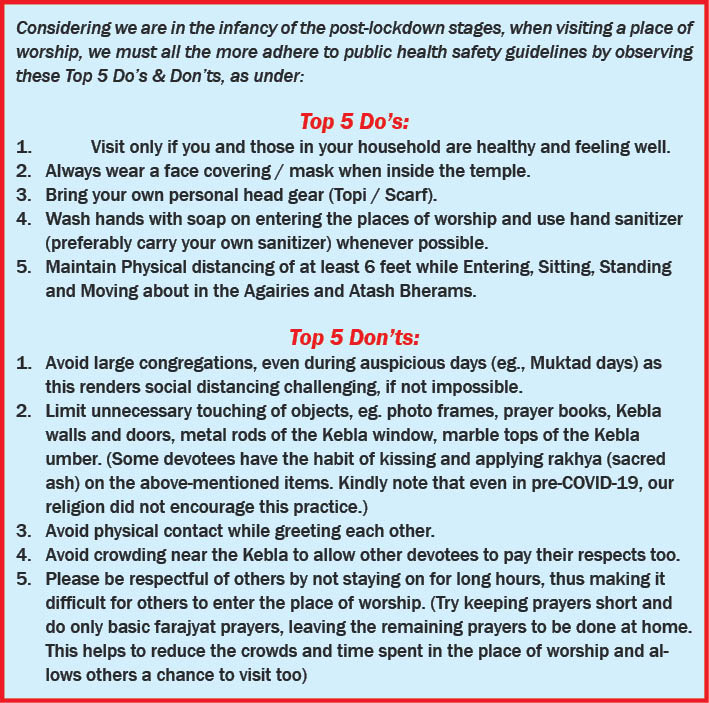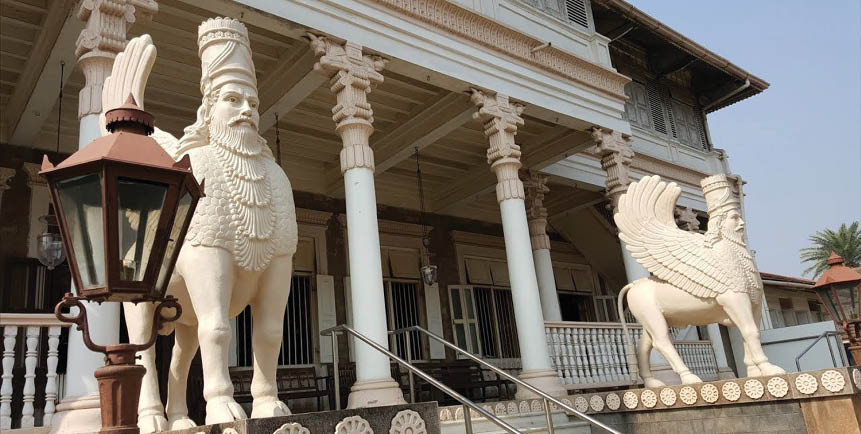Er. Dinshah Aspi Anklesvaria is a practicing priest and a Human Resources professional, working with the house of Tatas. He commands over thirteen years of experience in the hospitality and culinary sector in various capacities and expertise in the areas of Human Resources and Training.
The Baffling Start To New Year 2020: Every year, on March 21, Jamshedi Navroze, our Agiaries and Atash Behrams are flooded with streams of worshippers, each exchanging happy greetings, blessings, and well-wishes, with every known face encountered. These familiar scenes of Jamshedi Navroze were no different this year in many parts of the world. But in India, while 2020’s March 21 marked the onset of spring and commencement of a new year with fun and frolic, March 22 marked the end of it. COVID-19 had officially entered India and at the behest of the H’ble PM Narendra Modi, the nation went into a complete lockdown. Almost instantly, in a bafflingly unprecedented fashion, everything shut down, from places of work across professions, to places of worship across religions.
Religion In The Pandemic’s Pandemonium: During times of anxiety and uncertainty, it is quite natural for people to turn to religion, if they so believe, for solace and enlightenment. Many tend to visit places of worship more often during such times. Places of worship are not just run-of-the-mill, brick and mortar structures. They represent powerhouses of divine energy and can provide devotees with much-needed spiritual comfort and positivity. Some devotees visiting the Agiaries and Atash Behrams, sometimes stay for hours, till they find spiritual solace or until closing time, whichever comes first. This year, however, with places of worship shut to visitors and religious congregations curtailed to almost nil, the strict pandemic-related lockdown restrictions hit religion right at its heart.
Using Technology To Bring Spiritual Comfort Into The Home: Religions and faiths that permitted, took their Sanctum Sanctorum and Gods directly to devotees’ homes with the help of technology by performing live darshans/aartis/sermons through television, social media and mobile apps. Some religious leaders conducted congregational worship sessions via video conferencing, retaining the spiritual experience to the best extent they could. While some may point out this amalgamation of technology with spirituality was already happening, the lockdown propelled it further and spread it wider.
The Lingering Threat Of COVID-19: As the nation cautiously lifts lockdown restrictions, throngs of people once again will head straight to their place(s) of worship. As we continuously learn more about this virus and hope to discover the vaccine against it, the threat of COVID-19 is far from over. In the rush to escape from the now-months of being confined to our homes, we do not want our own negligence and carelessness to cause our holy places to shut down again or spread the virus further in our society, at large.
Social Distancing Is NOT Spiritual Distancing: Public health officials encourage everyone (regardless of age or even physical health) to wear face coverings / masks, and adhere to social-distancing guidelines, especially when you step out. Most of our Zoroastrian places of worship are large in occupiable space and have fairly good means of promoting fresh air flow and so are well-equipped for accommodating social distancing guidelines. However, it would be impractical to assume that all Agiaries and Atash Behrams have resources to implement the expensive post-lockdown safety equipment and protocols seen in many public shared places.
It is simply not feasible to have equipment like thermal scanners or pulse oximeters at our places of worship. Nor should Agiary or Atash Behram visitors expect their religious leaders, Ervad Sahebs or chasniwalas to appear in full PPE gear at the entrance, taking temperatures and tracking personal contact details of their visitors. With the holy days of Muktad starting next month, most of our Agiaries and Atash Behrams will witness high traffic of devotees. Some devotees may even embark on religious journeys of visiting multiple Agiaries and Astash Behrams in a single day. Therefore, the onus of keeping our places of worship safe lies on us.
Us Zoroastrians proudly consider ourselves to be disciplined and educated citizens. In these times especially, we must indeed behave as such, when at least visiting our places of worship by thinking of others’ well-being on par with our own. For eg., elderly worshippers, particularly those above 65 years of age, those with co-morbidities, pregnant women, and children below the age of 10 years should avoid visiting.
We must also take care not to risk the health and safety of our priests and Boiwalas, many of whom have continually been on the religious frontlines preserving our holy fires and performing key rituals during this lockdown period. Remember that social distancing is not the same as spiritual distancing.

Adherence to these guidelines takes a united effort and will allow observance of many of our cherished religious traditions and at the same time remain safe.
The isolation of the lockdown and temporary halt of common worship spaces have caused many of us to examine our faiths in a new way. Religion has become less communal and more personal. The lockdown period has made each devotee look inward and realise that God resides not just in the temples, but in our hearts!
